We know the underwater world is full of surprises and amazing creatures. There come Whiskered wonders, named for their prominent barbels resembling a cat’s whiskers, that come in a staggering array of shapes, sizes, and colors. From the mighty Mekong giant catfish, the world’s largest freshwater fish, to the pint-sized pygmy Corydoras, catfish are an endlessly diverse group.
Content Table
But what exactly are these barbels for? And how do they help catfish thrive in their aquatic environments? Let’s unfurl the secrets of the smallest catfish and discover what catfish eat, and the amazing adaptations that make them alluring in various habitats.
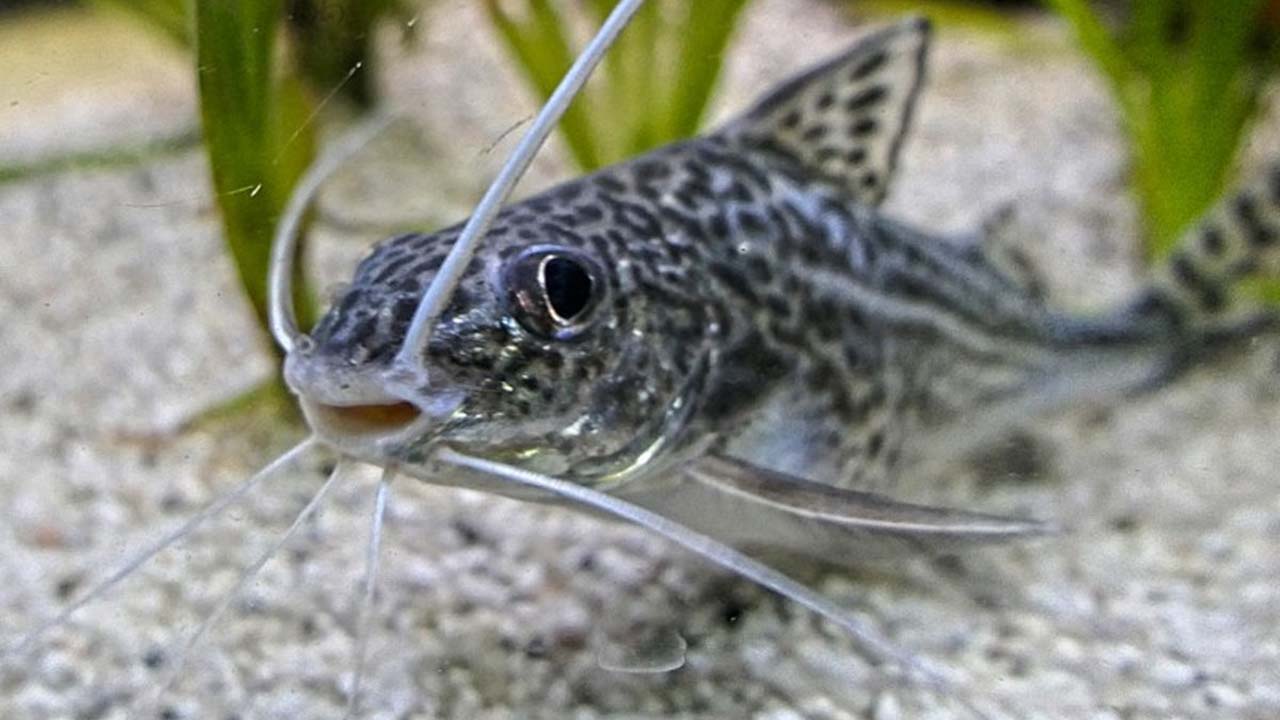
What is Catfish
One of the most popular is the generic name Fish from the Siluriform order, which includes catfish (or catfishes) from the ray-finned fish family. These aquatic superstars got their name because of their long whiskers, similar toa cat’s whiskers, that surround their mouths. Catfish genera are highly diverse and range from the world’s biggest freshwater fish, the giant Mekong catfish, to the smallest catfish, host-seeking species.
1. Catfish Family
Scientifically known as Siluriform, the catfish family is a massive and diverse group of ray-finned fish. They are widely recognized for their prominent barbels around their mouths, which resemble a cat’s whiskers. These barbels are important sensory organs that help catfish navigate, find food, and communicate with each other.
2. Origins
The creation of fossils of catfish dates back to the Cretaceous period, about 100 million years ago. Their earliest known habitat was in the supercontinent Gondwana, which stretched across the Southern Hemisphere before it broke apart around the present time. Gradually, the catfish spread and diversified as the continents separated, and they colonized freshwater habitats in all continents as well.
3. Habitat
Catfish are incredibly adaptable and can be found in a wide variety of freshwater habitats, including:
| Rivers | Streams | Wetlands |
| Lakes | Ponds | Floodplains |
Surprisingly, some species of catfish have been engendered by living in saline and/or brackish waters, too. But pay attention that when the catfish swim on top of the water, it may cause disease.
The greatest forms of catfish diversity occur in the warmer zones of South American, Asiatic, and African regions. It is quite another situation with Europe and North America, which have a very limited number of native catfish.
Types of Catfish
Here are some of the most common types of catfish:
1. Channel Catfish
| This is the most common kind of catfish that can be found in North America. They are usually easy to catch and can grow up to a desirable size, thus, a preferred kind of fish for fishermen. Moreover, channel catfish have become a favorite among aquarium fish as they are quite peaceful and hearty. | 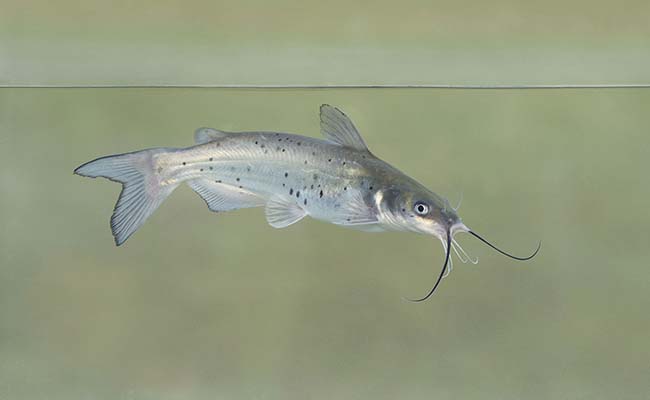 |
2. Pleco Catfish
| These aquarium catfish are widely used because they devour algae, which aids in the maintenance of a clean tank. Plecos are available in a multitude of sizes, and you should select the right size to coordinate with your aquarium. Not all pleco species can grow large, which should help you in case you cannot provide a suitable environment for them. | 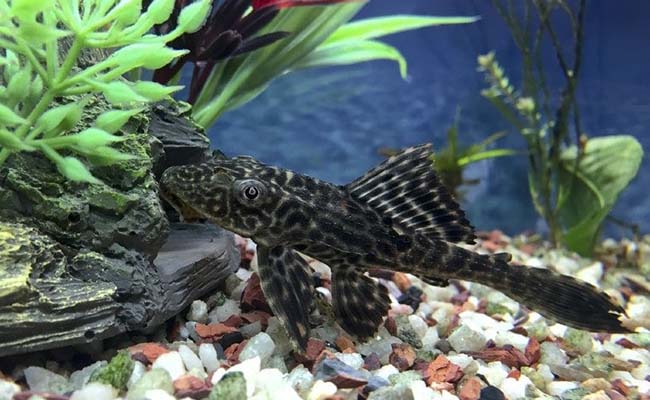 |
3. Upside-down Catfish
| The reason for the name is that in their daily life, upside-down fish spend most of their time swimming in this unconventional way. These fish are considered a peaceful species and therefore, a good choice for community tanks. Catfish that swim upside down are minor, and they are well known for being beginner’s fish. | 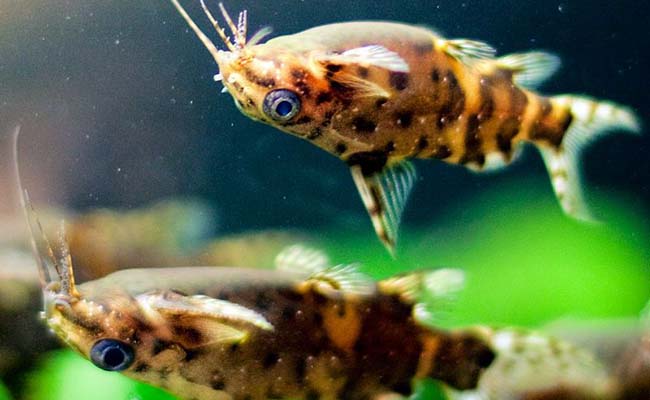 |
4. Electric Catfish
| With their peculiar name, electric catfish tend to make electrical currents in the water. They generate a discharge of electricity that serves to subdue their prey and protect them from predators. Often, catfish are not chosen for fish tanks because they can produce the amount of electricity that hurt fish. | 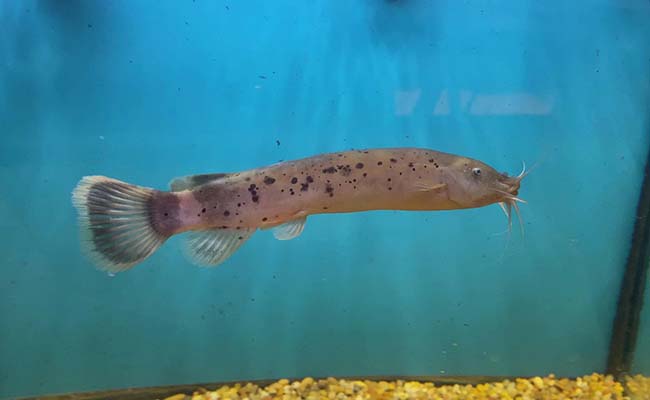 |
5. Walking Catfish
| A walking catfish is a species of catfish that can breathe air and walk on land with their unique pectoral fins modified as a hind leg. They challenge the terrain by employing their pectoral fins to go from one body of water to another. Walking catfish are not widely held in pets, but they still draw our attention to how broad the family of catfish is. | 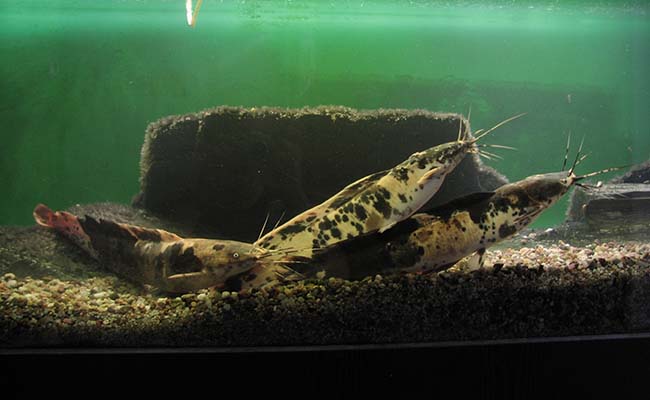 |
6. Corydoras Catfish
| Their small size makes them suitable for aquariums. They have a gentle character and an easy-going nature. The corydoras are popular with fish keepers for their bottom-feeding habits and useful work in clearing out aquariums. | 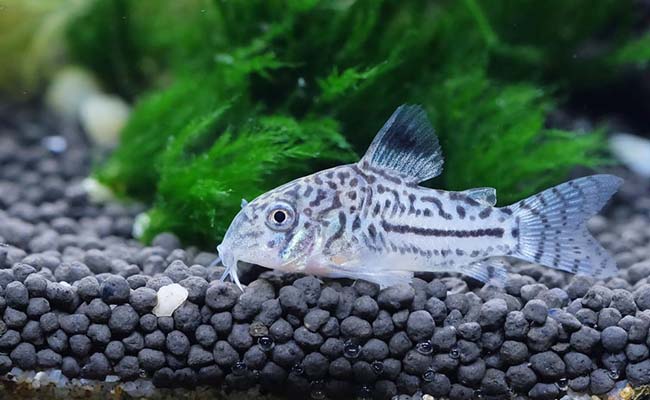 |
7. Blue Catfish
| These kinds of catfish are similar to channel catfish, but they will eventually become larger and have a slender body type. In addition, they are less frequent compared to channel catfish. | 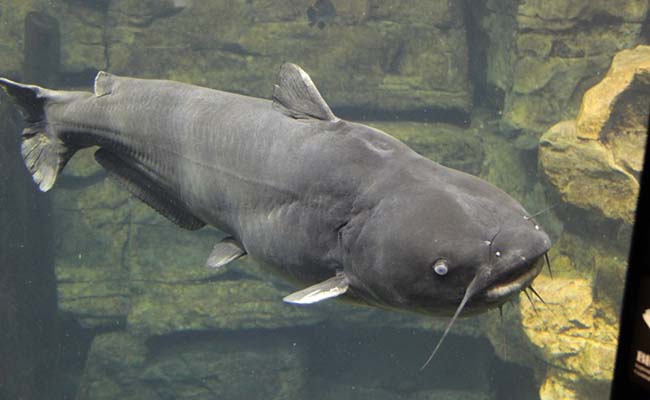 |
8. Flathead Catfish
| Flathead catfish are recognized for their big flat-headed bodies. They are lying in wait for their prey and are thought to be the most challenging ones to catch. | 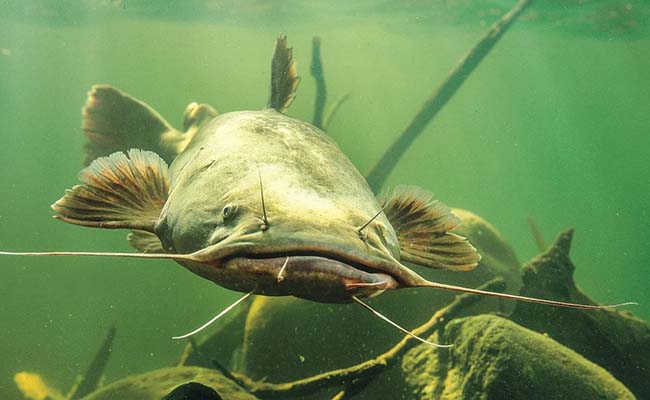 |
9. Bullhead Catfish
| The catfish’s family includes the brown bullhead, the black bullhead, the yellow bullhead, and so on. They are generally smaller than channel catfish and have a stockier body shape. | 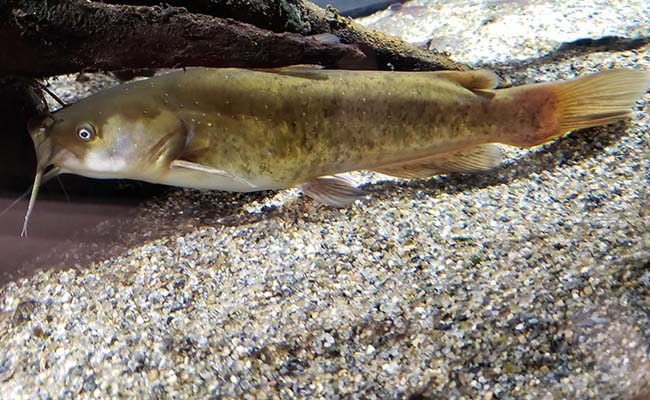 |
What do Catfish Eat?
Catfish are generally omnivores, meaning they eat both plants and animals. Their diet can vary depending on the species, age, and habitat.
Wild catfish
Young catfish typically eat plankton, aquatic insects, and small invertebrates. Adult catfish expand their diet to include fish, crayfish, snails, mussels, algae, and even fruits and seeds.
Aquarium catfish
They are not picky eaters and will consume a variety of foods, including:
| Flake food + Pellets | Algae wafers | Bloodworms | Daphnia |
| Sinking carnivore pellets | Brine shrimp | Tubifex worms | Mosquito larvae |
Do all Catfish Eat Algae?
No, all the catfish are not algae eaters. Some of the aquarium’s popular species like Otocinclus catfish or the Bristlenose pleco are known for their algae-eating abilities. While many catfish have more varied diets. They may, for instance, be omnivores, scavenging for leftover food, insects, and small fish, or prone to eat even fish depending on the family type. Consequently, algae might be a part of their diet, but algae is not the only source of food for most catfish in the stream.
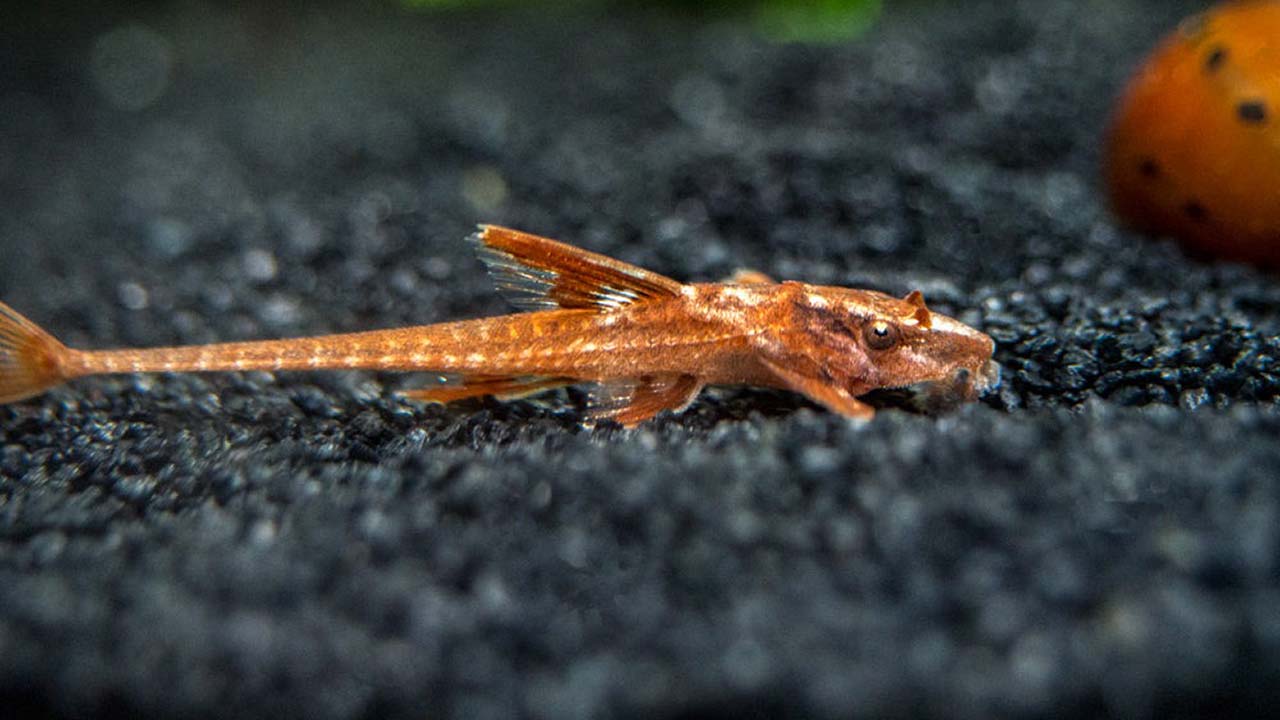
The World’s Smallest Catfish
The adorable title of the world’s smallest catfish is won by the Pygmy Corydoras (Corydoras pygmaeus). They are tiny beings (3 centimeters) when they mature, which is almost as small as a fingernail. Even though they are miniature, they are full of character and entertaining to have in your nano tank or small-sized aquarium so that you can watch them.
What is the Difference Between Catfish and Pacu Fish
| Features | Catfish | Pacu Fish |
| Family | Siluriform (Catfishes) | Characidae (Characins) |
| Barbells | Yes, prominent barbels around the mouth | No barbels |
| The Dorsal Fin | Usually has a sharp, spiny first ray | The first ray of the dorsal fin can be spiny but not as common |
| Feeding Habits | Mostly scavengers and bottom feeders | Omnivores with a fondness for fruits and nuts |
| Teeth | Lack teeth have sucking mouths for feeding | Have sharp teeth used for crushing fruits and nuts |
| Minimum Tank Size | Varies greatly depending on species (small to very large) | Generally, large fish require large tanks |
| Temperament | Can be peaceful or aggressive depending on the species | No barbels |
Origin: Primarily freshwater in South America, Africa, and Asia. Freshwater in South America.
In summary
Catfish are a diverse group with whisker-like barbels that help them navigate, find food, and communicate. They range from the massive Mekong giant to the tiny pygmy Corydoras. Found in freshwater worldwide, catfish are scavengers, omnivores, or even insectivores. While some catfish, like plecos, are algae eaters, many have more varied diets. Their fascinating adaptations make them alluring members of the aquatic world.
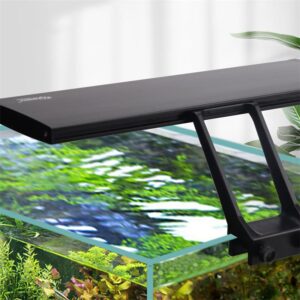

Leave a comment